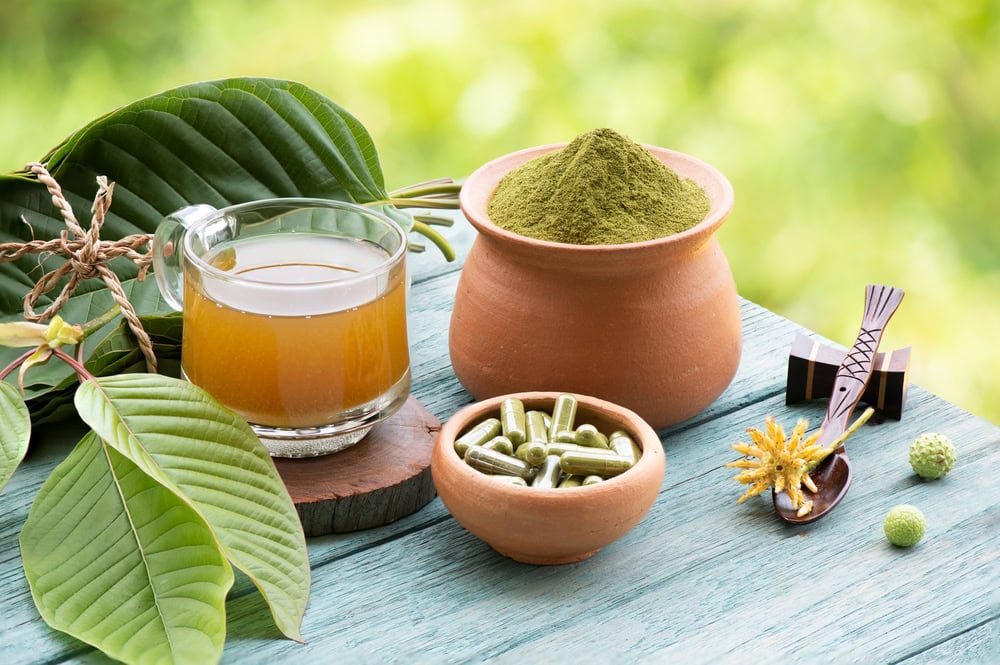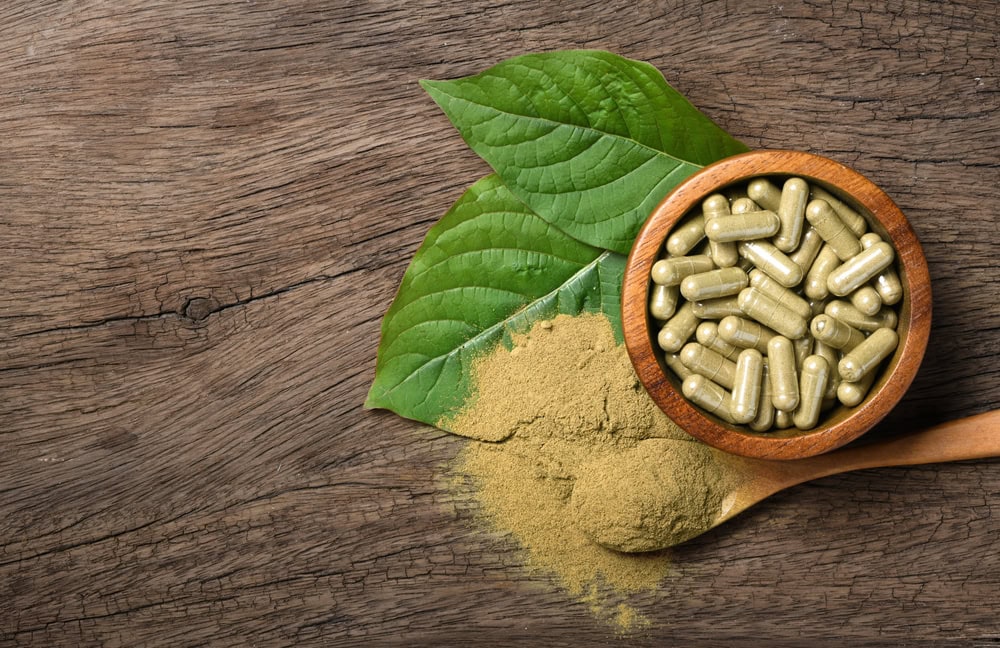Are you one of the two million people who have used kratom in the past year? Are you wondering “How long does it take to withdraw from kratom?” The newness of the kratom phenomenon can make finding information about side effects difficult. However, the seriousness of this substance should not be underestimated just because kratom isn’t as widely discussed as other habit-forming substances.
Many people who discover that a loved one is taking kratom are uncertain about how to take action due to the general lack of knowledge regarding kratom side effects, dangers, withdrawal, and legal status. Kratom is a serious substance with serious risks that have been highlighted by the U.S. Food and Drug Administration, Drug Enforcement Administration (DEA), and many more state and federal agencies. In this post, we’ll discuss a variety of issues related to the use of substance and answer questions you may have including “How long does it take to withdraw from kratom?”
What Is Kratom?
While kratom isn’t as widely known as other substances that pose risks for dependence and physical harm, its usage has grown substantially in recent years. Kratom comes from a tree that’s native to Southeast Asia. Kratom leaves contain a potent chemical called mitragynine that has an effect on the body that is similar to the effects produced by opioids. In fact, kratom is often compared to morphine because of the way that it can help to relieve pain. Many people use it for that exact reason. Others rely on it to relieve anxiety due to its relaxation effects. Another compound in kratom called 7-hydroxymytragynine contributes to the plant’s calming and psychoactive properties.
Kratom leaves are processed for consumption by being crushed and smoked. The most common forms of kratom available are tablets, capsules, and extracts. Some producers create powders that are intended to be ingested like tea. Several states and countries have banned kratom. The FDA has warned Americans about the risks of using products containing kratom.
Many people are confused about the legality of kratom. Currently, kratom is not considered a controlled substance. It is banned in only six states and is actually quite widely available in convenience and vape stores, as well as online. However, that does not mean that kratom is safe. Kratom is not currently approved for medical use. In fact, the DEA lists kratom as an official Drug and Chemical of Concern.
Connect With Us Now
Reach out to us now for immediate support, or let us know the best time to contact you through our confidential callback service. Your journey to healing is just a conversation away.
What Does Kratom Do in the Body?
While kratom leaves are rich in chemical compounds called bioactive alkaloids that influence the body, research has mostly been focused on two compounds called mitragynine and 7-hydroxymitragynine. Both compounds activate the brain’s mu-opioid receptors in ways that can be compared to heroin or oxycodone. Research shows that mitragynine may bind to the brain’s adrenergic receptors, serotonin receptors, and dopamine receptors producing opioid-like effects.
The exact effects of using kratom can vary widely based on the amount taken, the potency consumed, and a person’s underlying biology. Generally, people who use kratom report a combination of stimulant-like effects and sedative-like effects. Common effects of kratom include:
- Increased energy
- Alertness
- Rapid heart rate
- Relaxation
- Pain relief

Side Effects of Kratom
It’s not uncommon for people who use kratom to also experience a variety of negative side effects. Known side effects of kratom use include:
- Nausea
- Constipation
- Dizziness
- Drowsiness
- Nausea
- Vomiting
For some people, kratom use triggers more severe adverse mental and neurological symptoms that can include confusion, tremors, and seizures. Other people experience cardiovascular effects that include elevated blood pressure and slowed breathing.
Severe liver problems are closely associated with prolonged kratom use. People who use other drugs and substances in conjunction with kratom may be at higher risk for liver problems and other severe side effects. Sadly, kratom-related deaths are on the rise. In most deaths, people also use other substances.
What Are the Withdrawal Symptoms of Kratom?
Like any form of substance withdrawal, kratom withdrawal occurs when a person experiences physical and mental symptoms after either reducing or discounting use. The very presence of kratom withdrawal symptoms indicates that a person has developed a physical dependence that requires both medical and psychological attention. Another sign that a person is dependent is that they have a need to take more and more of the substance in order to achieve the same feelings they experienced the first few times they took kratom. The body’s reaction to experiencing diminished feelings after ongoing kratom use is called tolerance. Tolerance is what can lead a person to consume dangerous levels of kratom and other substances.
When it comes to kratom withdrawal symptoms, not every person will experience the same type and intensity. If you’ve been taking kratom to the point of becoming dependent on it, it’s safe to assume that you will experience discomfort once you discontinue use. In general, symptoms can be expected to be more severe if you’ve been using high amounts of kratom for an extended period of time. Based on research, fatigue is considered the most common side effect of kratom withdrawal. One study found that 86 percent of people suffered from a severe lack of energy after quitting kratom. Other potential symptoms of kratom withdrawal include:
- Extreme constipation
- Abdominal or gastrointestinal discomfort
- Agitation and anxiety
- Poor appetite
- Runny nose
- Strong cravings for kratom
- Depression
- Muscle aches
- Nausea, vomiting, or diarrhea
- Restlessness
- Disrupted sleep or insomnia
- Sweating
- Watery eyes
The overall lack of research and knowledge regarding the adverse effects of kratom withdrawal can make the process dangerous. For this reason, it’s wise to undergo a supervised medical detox instead of attempting to withdraw from kratom at home.
A medical detox ensures that a trained team is monitoring detox symptoms in order to preserve your comfort and safety. For many people, having a support team overseeing every stage of detox can prevent risks for relapsing in response to the discomfort and unpredictability that are common with an unsupervised kratom withdrawal.

How Long Does It Take to Withdraw From Kratom?
While there is no one-size-fits-all timeline for kratom withdrawal, most people experience an onset of symptoms within 48 hours of discontinuing kratom use. Symptoms generally peak within a few days. There is the potential for some people to experience symptoms for up to two weeks. Many people also continue to experience psychological symptoms that can include depression and deep cravings once the initial withdrawal process is over. A self-guided withdrawal that doesn’t include support for addressing the underlying issues of substance use can make a person vulnerable to relapsing.
Many people who begin taking kratom recreationally are surprised by just how powerful this substance’s draw can be. While breaking physical dependence on kratom through a detox program is vital for restoring health and well-being, focusing solely on detoxification creates an incomplete plan. For many people who find themselves dependent on kratom, a treatment plan that includes medical detox, inpatient care, therapy, and ongoing support is essential for breaking free from unhealthy cycles.
Treatment Options
Treatment for kratom use can be similar to treatment for any type of dependency-forming substance. Under the care of a support team, clients can undergo cognitive behavior therapy (CBT) and psychotherapy in both individual and group settings. For clients interested in holistic and alternative therapies, options like adventure therapy, art therapy, and more can be used to promote healing and thriving. Additionally, aftercare programs that provide access to resources after a person has left inpatient care can provide an important lifeline.
*Disclaimer: Content found in this blog does not necessarily reflect the teachings, practices, or policies of Health Care Alliance of North America or its treatment centers.
Connect With Us Now
Reach out to us now for immediate support, or let us know the best time to contact you through our confidential callback service. Your journey to healing is just a conversation away.



